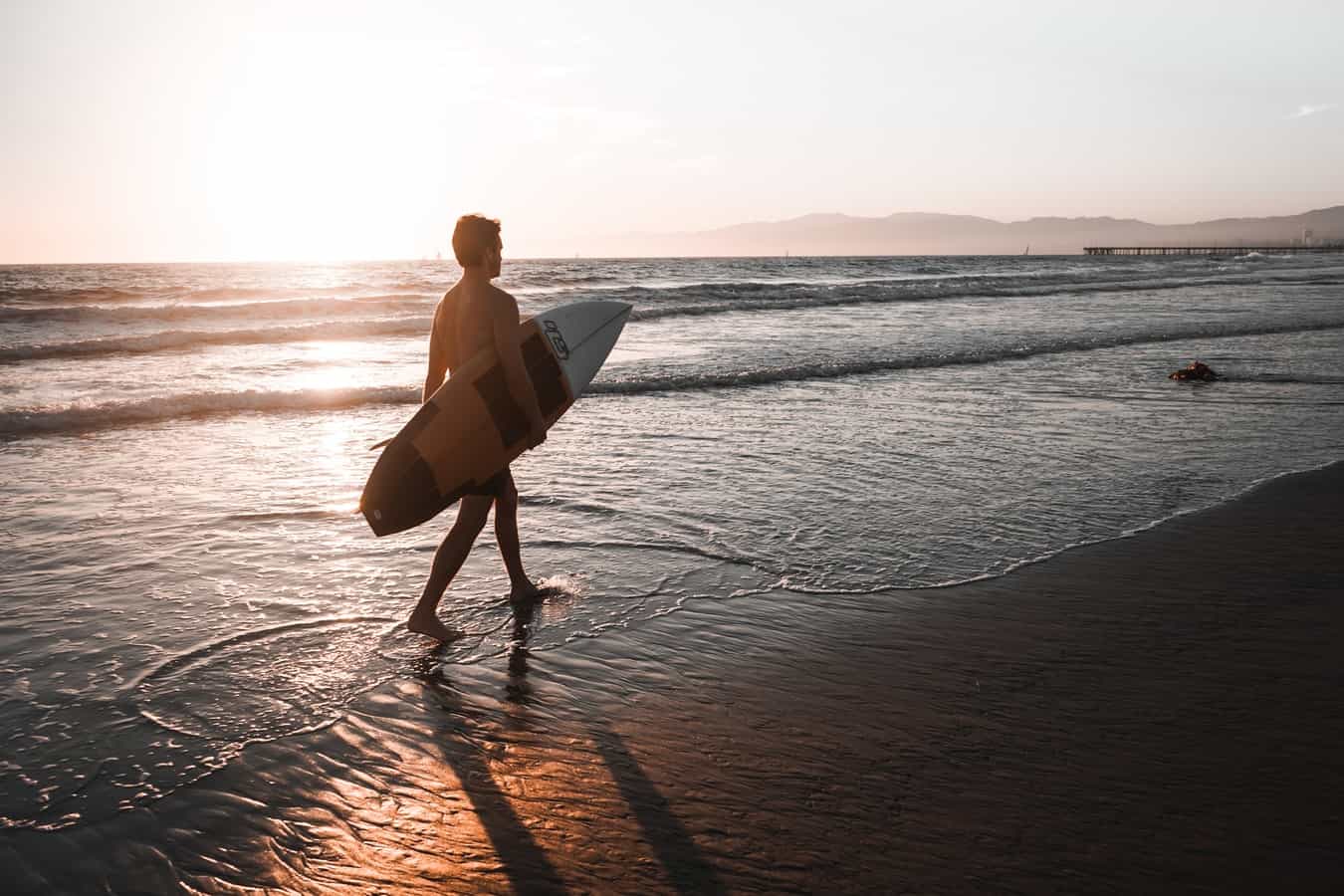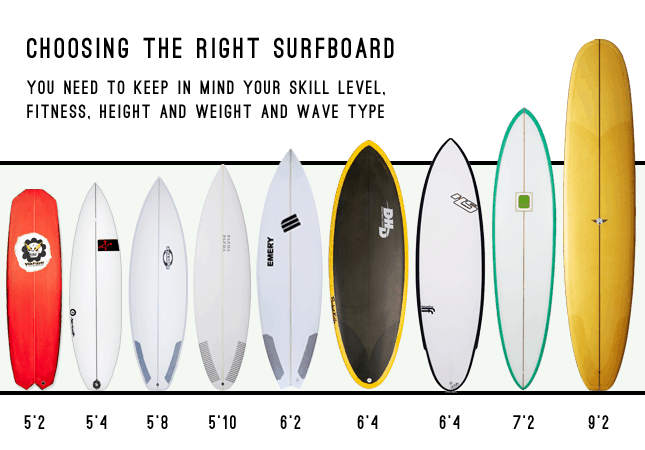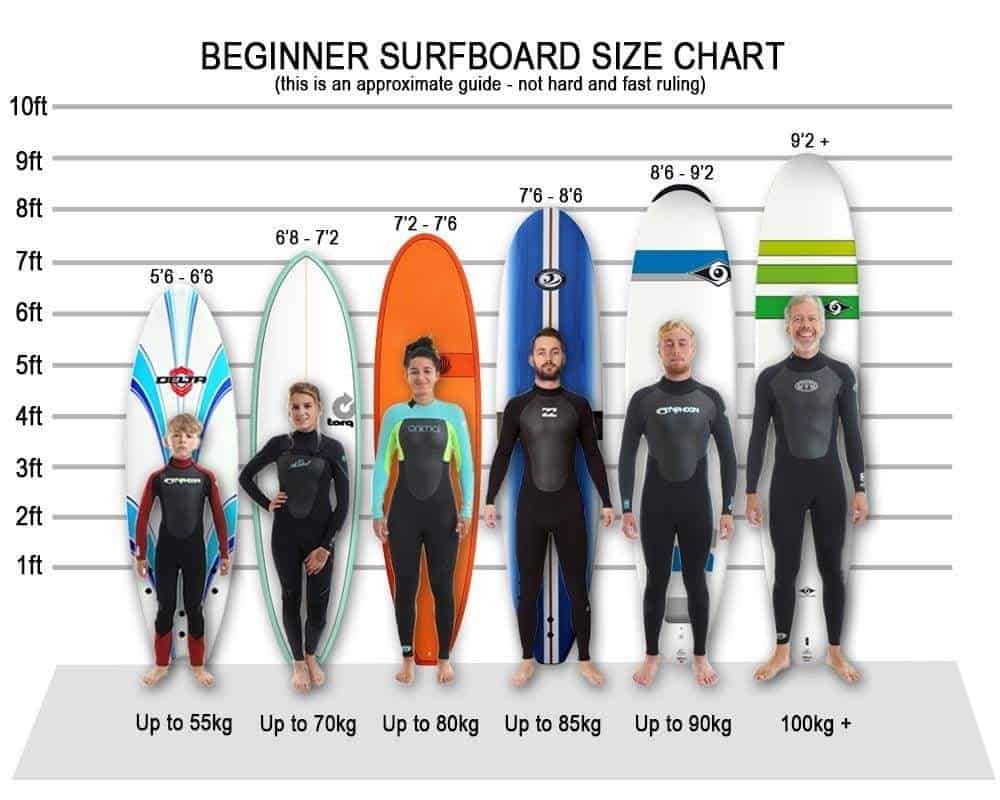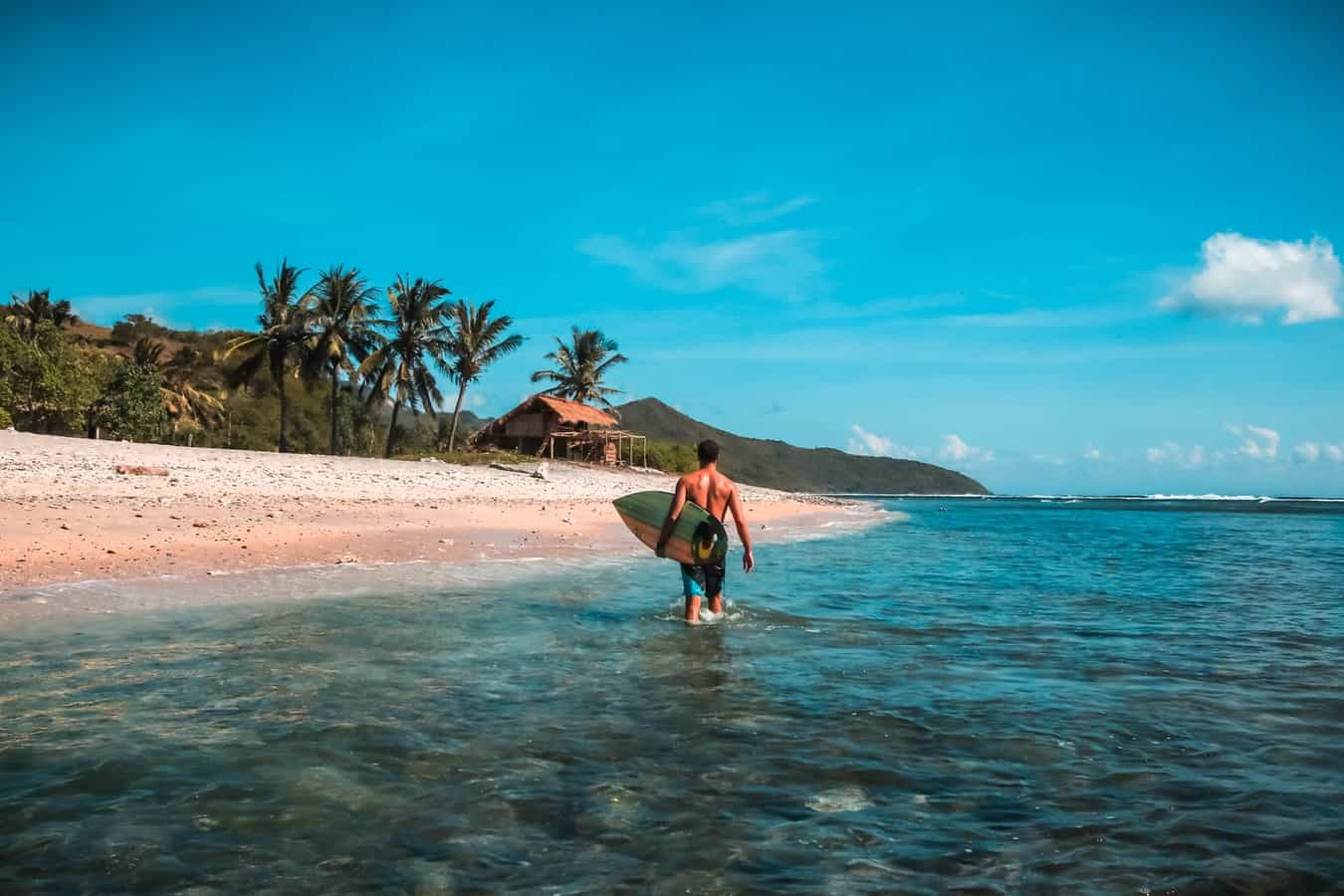Surfing is by far one of the most exciting experiences a person can have with the ocean. As much as we want to grab the nearest surfboard and run right out to the waves, it is important to have the right surfboard for beginners to learn. When you can float and paddle quickly to your wave with enough stability to pop your feet up, you’ll be living the wave life soon.
So, Which Size Surfboard Is Best For Beginners?
Beginners should look for a higher volume and longer surfboard. The longboard is the best choice for beginners and is over 8 ft tall and over 20” in width. The volume of a longboard is between 60-100 liters. A higher volume gives more buoyancy and a longer length gives more stability.
You might want to buy the coolest looking surfboard in the shop, but that is actually the last factor you should look at when choosing your first board. Experienced surfers and pros still choose their boards based on their experience level and what type of board they need for what type of surfing they will be doing. You will need to pick a surfboard that gives you better odds of staying afloat and moving from wave to wave quickly.
Which Surfboard To Choose
There is a freedom that comes while riding a wave and a limitless bond with the ocean that surfers develop. Who doesn’t want to be a part of that? It is exhilarating! Most of us want to grab a board and start running to the wave, but it isn’t as easy as that. It takes practice and the right surfboard to learn how to ride the waves like a pro.
Staying on top of the water and being able to paddle are the basic necessities for a beginner. Beginners need more buoyancy and stability in order to learn basics such as paddling, turning, properly popping to your feet, and catching waves on a longboard before moving to a more advanced surfboard.

A seasoned surfer tends to use a shortboard with more of a rocker and less volume having already mastered paddling and popping up on the board. As a beginner you need a surfboard with more buoyancy and stability to be able to paddle quickly to waves and stay afloat while getting your feet on the board.
Beginners work better with longboards because they give the most stability and have the best buoyancy. They are longer and have more area to pop your feet up on as opposed to a shortboard that doesn’t stay above water as well. On a longboard it is much easier to paddle and glide from wave to wave, which puts you on more waves and gives you more experience.
There are also mid boards and hybrids you can look into. These surfboards tend to work well also but more for a person with a small amount of experience, yet still a beginner. You will still need to look at the same criteria when shopping for these boards.
Longboards are generally over 8 feet and over 20 inches wide with a rounded nose for great stability. The volume on longboards is normally between 60-100 liters, which gives them their great buoyancy. These boards are the best choice and glide efficiently which makes learning for a beginner a breeze.
Many surfers prefer shortboards to the longboard, but shortboards don’t float enough for a beginner and are far less stable. It’s best to develop the beginning basics of paddling, turning, properly popping to your feet, and catching waves on a longboard before moving to a shortboard.
To learn to surf there is no other way other than to get out and practice with the waves. Once you have become comfortable with popping up on your board and staying stable with the waves, you will have the freedom to explore your style of surfing. You’ll need a board that will make it easy for you to learn and keep you moving easily, not sitting in the water struggling.
How To Choose Your Surfboard
There are many surfboards and even more lingo to go through to find your perfect match. It may seem like a lot, but in the end you will have the perfect surfboard and endless memories. Before you know it, you will be riding the waves like a pro and shopping for your next board.
Volume and Length
When it comes to length and volume, you will need a board that will keep you afloat and stable. You will need to get to waves quickly, and easily plant your feet when the time comes. The more waves you can get to, the quicker you learn and the more you plant your feet, the easier it becomes.
The general rule in finding your new surfboard is that it should be three feet taller than you. The taller you are, the longer the board you will need, and vice versa. The length of the board is measured from top (tip of the nose) down to the bottom (tip of the tail).

There are several different types of surfboards including shortboards, funshape, mini mal, longboard, and soft top. As you can see from these boards here, each has a different length and volume.
Length of the surfboard is important and every surfer from beginner to expert takes into account the length of their board when choosing one. It has nothing to do with how you look carrying your board when running to the wave, or how you look riding the wave. Length determines your stability and maneuverability.
A longer board is more stable, and a shorter board is easier to maneuver. You might think you would rather maneuver better being a beginner, but that is not the case. If you can maneuver well but it takes a long time to get to a wave, you can’t get your feet up as well, and you aren’t floating enough, you will sit in the water more than actually learning the waves.
With surfboards, volume is measured in liters and the more liters, the more buoyancy and stability you will have. Anything over 60 liters will keep you afloat best and the higher the volume, the more you float.
You will be flashing through the waves in no time if you pick a board high in volume and three feet taller than you. The bigger the better when learning to plant your feet and zip around. A bigger board requires less paddling and glides easily to the next wave.
Your weight also factors into the volume and buoyancy. The more you weigh, the more volume you will need. The best way to find what volume you will need is to divide your weight by the volume of the board.
As important as volume and buoyancy are, other factors are just as important. You don’t want the right amount of liters but still have the wrong board. You will need to consider length, volume, width, and rocker when looking for your wave companion. It is not just about how the surfboard looks and feels, it is about how it will perform and support your needs in the water.
Width and Design
Wider surfboards are great for beginners because they provide more surface and flotation area. The extra room between the rails (sides) can be more forgiving in foot placement until you are a little more sure of your footing. The width of the board is measured from the widest part between rails.

Surfboards in the hybrid and longboard designs tend to be wide and round, making them the best option for beginners. Shortboard and fish types are more of a narrow category. Wider surfboards are made to do well in mellow waves where narrow boards do better in powerful waves because of maneuverability.
The Rocker
The rocker on a surfboard is the curve from its nose, to its tail and is very important in choosing your board. The less rocker a board has, the flatter it will be, leaving more of your board on the water. The more rocker a board has, the more curve it will have, and more maneuverability.
Experienced surfers tend to use a board with more rocker. They are able to maneuver quickly and the nose stays out of the lip of the wave. A higher rocker keeps the nose from dipping into the lip of the wave. A flat rocker will float and glide on the water though, making it a better choice for a beginner.
Material
You might think the material your new surfboard will be made out of does not matter much, but it matters quite a bit. The two main materials surfboards are made out of are Epoxy and Polyurethane (poly or PU). Epoxy is the better choice for beginners because it has more buoyancy, is more durable, handles great, and doesn’t ding as easily. Poly boards are heavier and flex more, which more advanced surfers like to look for in their boards.
Remember to look for…
- Longer length for more stability
- Higher volume in liters for buoyancy
- Wider and rounder board for more surface
- A smaller rocker for more board on the water
- Epoxy material for durability and handling

